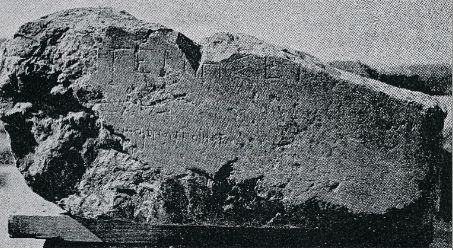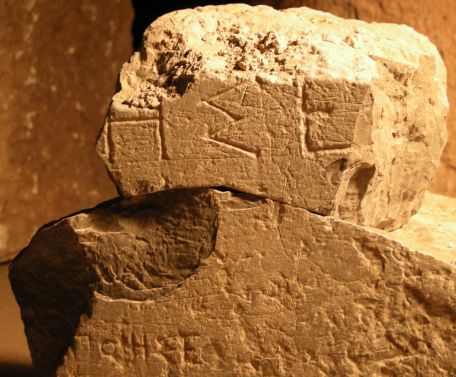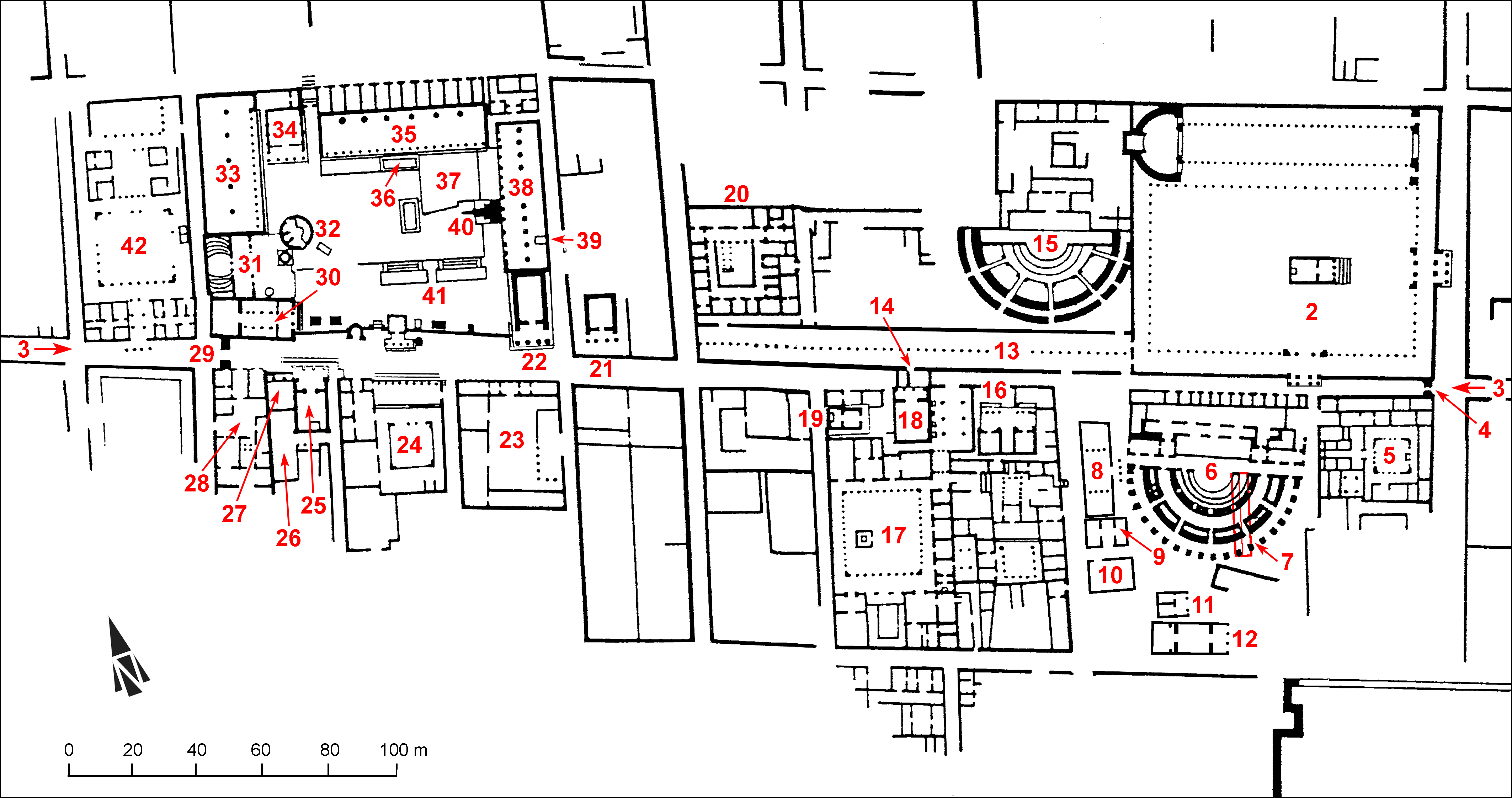EpiDoc XML:
IGCyr0657002
Trismegistos ID:
738345
Source description
Support: Right lower angle of a blackish marble base already broken at upper right angle and at left when found (w: 0.66 × h: 0.31 × d: 0.4); later broken into four fragments.
Layout: Inscribed in one line near the upper rim and in a second line in much smaller characters below.
Letters: Line 1: 0.035; line 2: 0.015; no serifs, short middle bar of epsilon, slanting sigma.
Date: Fourth century BC (lettering).
Findspot: Found in 1926 by G. Oliverio at Cyrene ➚: probably the agora.
Place of origin: Findspot.
Last recorded location: Cyrene Museum, inv. number unknown. Seen by Emilio Rosamilia in 2010 in Shahat: Cyrene Museum.
Text constituted from: Transcription from stone (E.R.).
Bibliography
Pugliese Carratelli – Oliverio 1961, p. 31, n. 12, fig. 23 (from †Oliverio's papers), and Robert, BE, 1962.363, whence SEG, 20.743; Rosamilia 2014, n. 2, whence SEG, 64.2012; IGCyr 065700 ➚. Cf. Oliverio 1927, p. 157 (mention of the find).
Text
French translation
Épigénès fils d'Eub[atas?].
Oeuvre de [---] fils de Démétrios.
English translation
Epigenes son of Eub[atas?].
Made by [---] son of Demetrios.
Italian translation
Epigenes figlio di Eub[atas?].
Opera di [---] figlio di Demetrios.
Commentary
Oliverio 1927 mentioned this base without publishing it as 'coming, as it seems, from the Agora'. He was publishing there inscriptions found in 1925 in the Sanctuary of Apollo and his paper belongs to the issue of April 1927, so that he wrote it probably at the end of 1926 or the very beginning of 1927. The present base would have been known to him but not fully studied at the time.
Owing to the similarity of lettering with the epitaph IGCyr0250002 the proposed restoration of the names at line 1 seems rather plausible, although other personal names beginning with Εὐβ- do exist.
We have here only at the nominative the name of the man featured in the statue that originally stood on the base. If the honours emanated from the city, this mention would not be missing. It is thus more plausible that a private citizen was responsible for the monument but did not want to let it known (the same at IGCyr0658002).
As pointed by Rosamilia, the name of the sculptor's father has no dialectal form and this might be a clue for a foreigner. However, it would be somewhat surprising that his origin would not be mentioned.
CC BY-NC-SA 4.0 Deed Attribution-NonCommercial-ShareAlike 4.0 International License.
All citation, reuse or distribution of this work must contain a link back to DOI: https://doi.org/10.60760/unibo/igcyrgvcyr2 and the filename (IGCyr000000 or GVCyr000), as well as the year of consultation.



